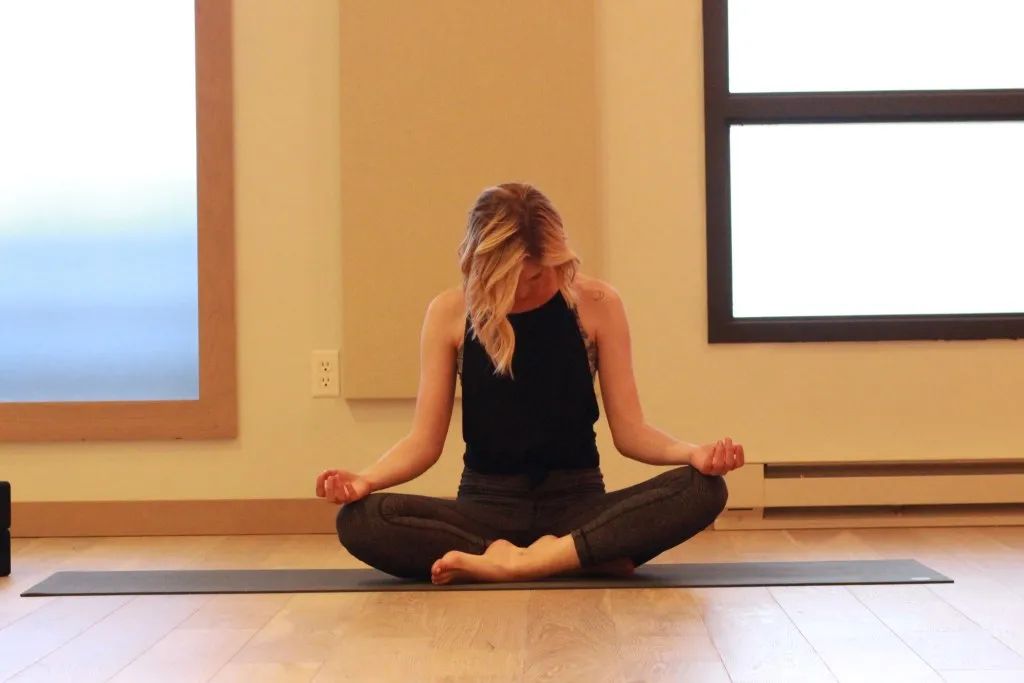Due to the need of work, modern people have to sit in front of the computer for a long time, or look down at the mobile phone for a long time.

Such an incorrect posture will not only lead to shoulder, neck and upper back pain, but also lead to serious cervical spondylosis over time.

Today, I’d like to introduce 2 simple yoga shoulder and neck physiotherapy actions, mainly aiming at the problem of shoulder and neck pain.

Regular practice can not only alleviate and prevent shoulder and neck pain and cervical spondylosis, but also effectively improve the posture of round shoulder hunchback and make you more temperament! The first set of static practice actions 1-2: simple sitting posture, with the back straight, the abdomen retracted, the shoulders backward, the head down, keep five breaths, the head back to the neutral position, the head back up, and keep five breaths 3: simple sitting, twist the body to the right, put the left hand above the right knee, and the right hand on the back of the hip, turn the head to look at the top of the right shoulder, and keep five breaths on the opposite side 4: kneel and stand ready, with the feet the same width as the hip and the legs vertical, Straighten your hands forward, extend your spine, expand your armpits, press your shoulders down, relax, stay away from your ears, and keep your chin close to the ground.

Keep five breathing movements.

5: King Kong kneels, slowly lift your weight forward, move your head forward, roll your head forward to the top of your head, the big legs are vertical, the cervical spine is vertical, and hold your heels with both hands.

6: enter the last movement, keep your forehead close to the ground, and keep your hands clasped behind your back to extend your spine, Relax your shoulders, lift your hands up away from your body, straighten your elbows, and keep five breathing movements 7: prone preparation, put your hands on both sides of your body, bend your knees, keep your heels close to your hips, grab your insteps from the outside of your feet, lift your chest, knees and thighs off the ground, and keep your thighs elevated.

The second set of dynamic exercises 1: stand, inhale, lower your head, exhale your shoulders backward, raise your head, and move your chest forward and upward.

5 groups of actions 2: stand preparation, Relax your shoulders, rotate your shoulder head, and move the inner side of your shoulder blades upward, inward and downward in turn.

5 groups of dynamic exercises 3: stand, the arms are the same height as your shoulders, and the arms are perpendicular to each other.
The right forearm is downward, and the left forearm is upward.
5 groups of dynamic exercises 4: stand, put your hands on both sides of your body, lift your arms upward, continue to lift them in a “t” shape, and lift them up in a “Y” shape until the two arms are parallel and slowly go down to “Y”, The “t” shape is finally restored to both sides of the body.
Five groups of dynamic exercises are performed.
5 groups of actions: stand, put your hands on both sides of the body, lift your right hand, draw a circle from front to back, and change your left hand to draw a larger circle as much as possible.
6: lie on your side on the cushion surface, bend your hips and knees, straighten your arms, slowly lift your right hand upward with the palm center relatively slow, and finally return to the palm center relative to the back of the body.
5 groups of side changing actions are practiced.
7: lie on your stomach, put your hands on both sides of the body, and hold fists, Exhale with your thumb up, inhale with your arm up, restore, dynamic exercise 5 groups of content are from the Internet, and the copyright belongs to the original author.
If there is any infringement, please contact to delete…


